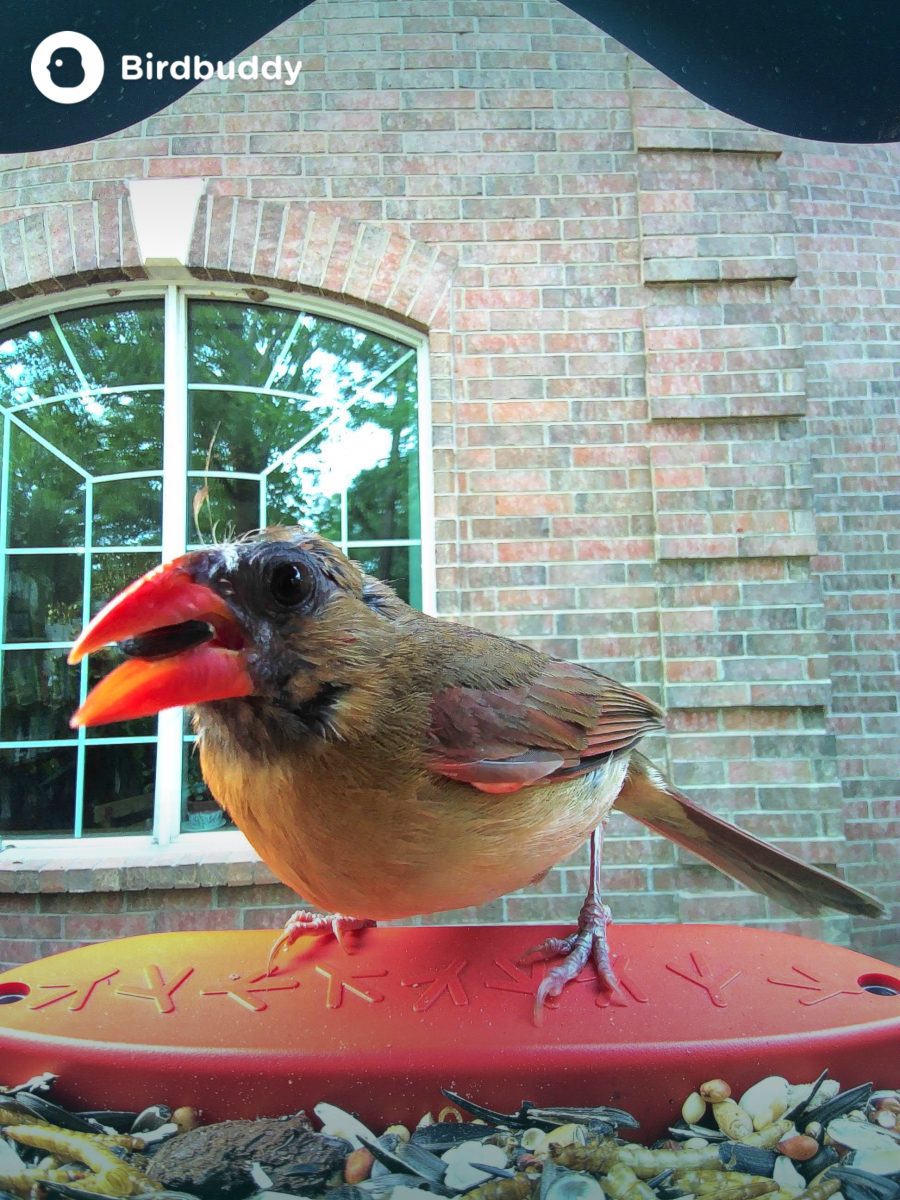A staple of The Woodlands, Texas, Northern Cardinals are among the more frequently seen animals in Piney Woods, especially the striking males, with their bright red plumage. But if you are an avid bird watcher, you may have noticed that there has been a change in the boisterous Cardinalis cardinalis here in the Woodlands: some are balding.
I, myself, first noticed this oddity a few months ago, in the winter of 2023. After my household acquired a Bird Buddy, a type of bird feeder which has a camera attached to it. A photo appeared on the feed; a female cardinal with many feathers missing from atop its head. Their appearance bred a melancholy feeling within me. Despite the initial hilarity of the birds, I started to worry about the health of the birds. The appearance of balding cardinals on my own turf scared me. Was this cardinal diseased? Would the baldness spread to the other birds who use the feeder?
After the first appearance of the singular cardinal with a scant visage, more and more cardinals began to appear at the bird feeder with feathers missing. Most were losing their signature cardinal crest; one even had a bit of a mohawk, with the crest remaining and its lizard-like ears grotesquely exposed. Not only were there more balding cardinals, the original balding cardinals continued to lose more and more feathers over time. This spread of the balding would have been alarming, but there were a couple reasons not to worry.
Despite their disheartening appearance, they displayed no further ailments; they behaved as they always had. The affected cardinals were adequately vivacious, ate vigorously, and made many continued appearances at the feeder. Cardinals often flock in monogamous pairs (along with various other cardinals), and the trailblazing ‘first’ bald cardinal had a mate who was not balding. This gave me reason to believe that it is not contagious.
But if the baldness was not an effect of a contagious disease, what is the cause of the balding? Curious, I consulted Google. I soon learned that this balding was not a Woodlands-centric occurrence, but rather, cardinals all over America were balding, and had been for years. There are two viable theories: theories as to the cause: mites and molting.
Molting is by far the more hopeful theory. Most cardinals lose feathers gradually, and they do not look like a balding man during the molting process. However, some cardinals do occasionally lose feathers in large bouts without gaining new ones, likely causing the balding effect. Sadly, this is likely not the case. If these birds were just molting, they would have grown their feathers back in the few months I have been observing them.
The other, more nefarious, and likely, option are bird mites. Bird mites are a type of arachnid, like ticks, which depend on sucking wild and domestic bird’s blood. They live for up to a few weeks. They are most rampant during spring and summer, thriving in hot and humid climates. They do, occasionally, and, uncommonly, affect humans. It is possible that the mites could slowly lead to birds’ deaths. The ugly balding effect may also cause the birds to struggle finding mates, who may find their scaly faces unattractive.
The future of these funny and pathetic looking creatures is unclear. Since there are not nearly enough people concerned or aware about these birds, this phenomenon may continue to become more widespread. With help from more dedicated researchers, a clear solution and answer may be discovered. As for the moment, balding cardinals are likely to stay bald.










Info • Nov 11, 2024 at 10:33 pm
I keep seeing bald cardinals in my feeders. It is true they eat well and come back. I took some photos of when they feeding their families. They always come in couples. So I hope that someone takes an interest in investigating more about our beloved cardinals.
Laura Landsbaum • Aug 29, 2024 at 4:01 pm
Mine are looking scruffy at my feeder these days!